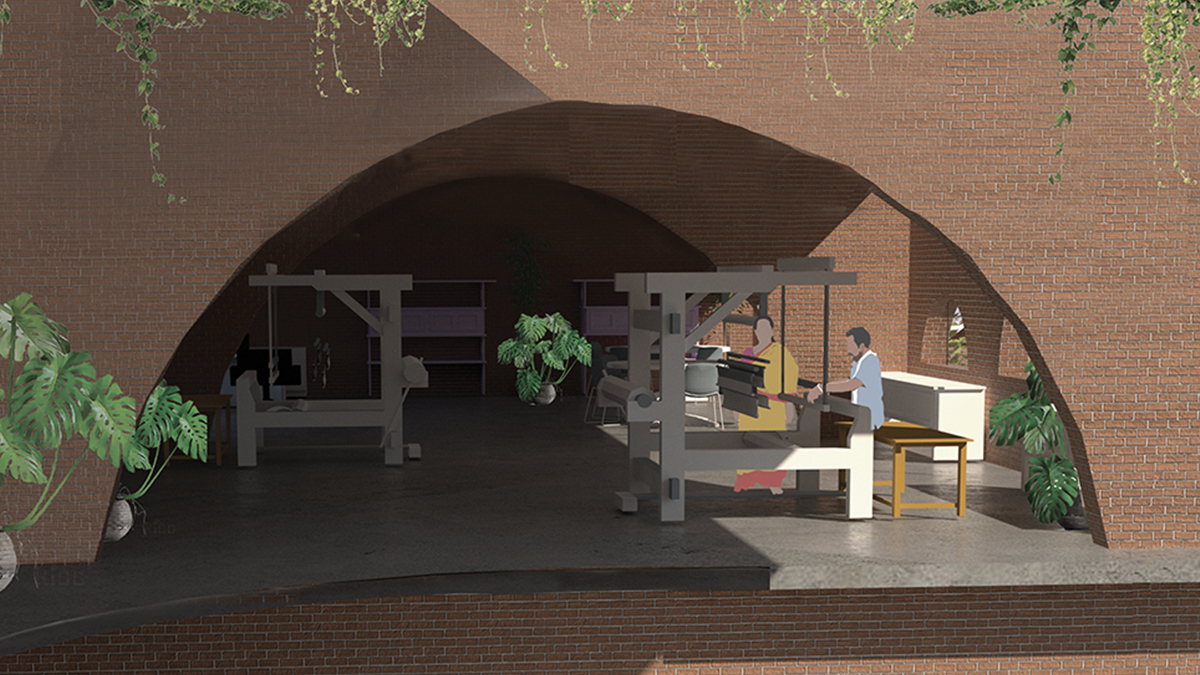Design Dissertation: Madhuli Awasarkar
Guide: Shilpa Sharma
Silk
The use of silk has long been a synonym for grandeur and a status symbol. People, art forms, history, mythology, diverse culture have influenced silk as a textile and thus it also embodies diversity and richness of textiles in Indian culture. Sericulture to silk is a long process that involves various mechanisms and people on various levels of complexity. With changing definitions of urban fabric, silk has evolved from a cultural entity to one that also has economic importance.
The demand for has made it a lucrative alternative to agriculture. The entire process from sericulture to its weaving involves converting the cycle of silkworms into a thread and later into a magnificent fabric. The many stages of its varied processing have helped generate employment.
Conflict
Maharashtra is one of the leading states in India involved in silk production. As the well-established states have concentration of the primary as well as allied activities, there has been stagnancy in the level of silk production. It was also found that all the activities from fibre to fabric are segregated in different geographical regions leading to inaccessibility for economically weaker class involved. As a result, it creates a long-distance dependency on trainings, allied services and processes. Sericulture and weaving structure are still at a vulnerable stage. Silk production process involves intense and promising labour, each of them with individual method of working with different working environments. As a result, their issues are divided into various levels dealing with internal, external conditions, social and economic structure and health parameters. Various regions have emerging sericulture farms and production set ups for which farmers are required to travel all the way to Mysore to acquire skills and trainings. As the cocoon forms and matures, it is auctioned in cocoon market at Karnataka. Whereas in case of handlooms, weavers have started turning their back to handloom methods and are adapting the power loom system, converting this art and skill of weaving into a mere industrial practice. Thus, this has created an impact on the overall cultural legacy of weaving.
Response
With increasing production pressure, lack of skill trainings and workshops, dependency on other states, existing problems in working, surrounding conditions, infrastructure, there emerges a need to find a solution to all these issues, tackle the cultural dilemma and mark its existence. It was observed that there has overall been less exposure to these communities due to economic and infrastructural difficulties. In order to carry out the whole process, empowering people has been an important step. Farmers, reelers, dyers, weavers are the whole and soul foundation to this system, hence as a response to the emerged conflict first step should be to equip and train these people in order to expand the system further which includes proper orientation and skill training to pass on the art, establish an interaction between various communities involved, providing them a platform to represent themselves and provide economic stability under government provisions.
Silk Sanyog: Unifying Silk and its People
Site: Nagpur
In Maharashtra, among all the districts Vidarbha has the maximum amount of silk farming carried out. As there is water scarcity and issues for water as a resource where agriculture is a primary occupation it becomes difficult for farmers to meet their ends meet. Nagpur district has been the leading district in sericulture and further weaving communities. It has an existing silk department working that aims to expand its training base for farmers and create more weaver’s service centres. The present area under sericulture in Nagpur district is about 141 acres which is mostly concentrated in Nagpur, Kalmeshwar,Katol, Narkhed and Ramtek of Nagpur district.Nagpur being at the centre has a well-established transport connectivity and allied.
Site is adjoined by two roads. Ambazari Main Road on the south west and VNIT campus road on south east One being a public edge and 3 sides being private edges. VNIT campus road edge is faces the institute which has no interaction with site. Other two edges on north and south are private plot boundaries which restrict the interaction. Main road edge being a public one helps in the physical and visual connectivity.
Design
The program consists of four respective phases with respect to the user experience. First being the experiential phase which includes Silk process, Textile exhibits, Conferences and talks as public space. Second one as an institutional phase which is a semi private space open accessible by trainers, trainees and visitors. Third is the administrative body with research and development expansion which is strictly a private space. Forth being the accommodation facility for trainees which is a private space. The design follows the program categorisation of four phases, 3 zones on ground floor and one first floor planned to segregate the users according to the activities. The masses are planned around intimate courtyards or pockets which as whole entity again has a central pocket or courtyard. The spatial arrangement is a response to existing functions, the admin with new sericulture department works with existing department, while training spaces are planned on its opposite for a dedicated uninterrupted space, while the public interaction spaces are planned in between these two masses. Built spaces are planned around a semi-open and open central spine which is a convergence of all public activities.









